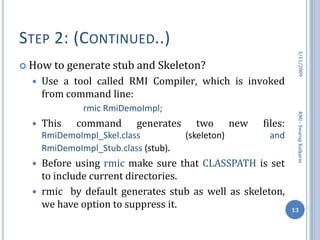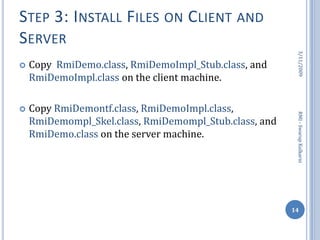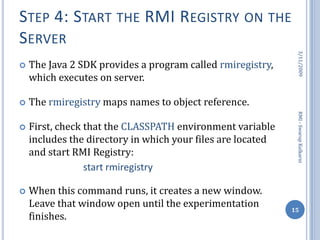This document provides an introduction and overview of Remote Method Invocation (RMI) in Java. It describes building a simple client-server application using RMI that allows a client to invoke methods on a Java object running on a remote server machine. The application involves defining a remote interface, implementing that interface on the server, generating stubs and skeletons, running an RMI registry on the server, and having the client lookup and invoke methods on the remote object.
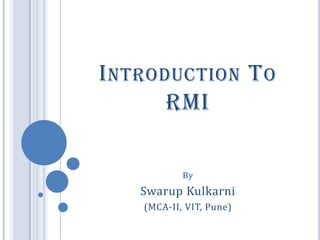
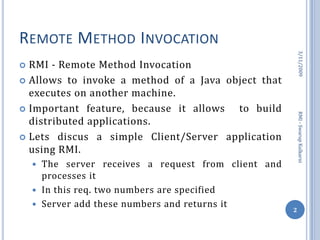

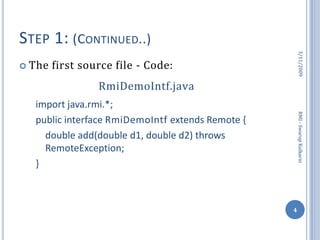
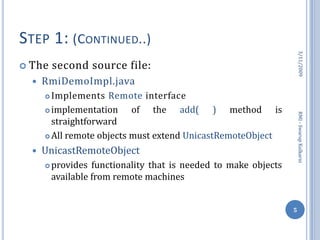
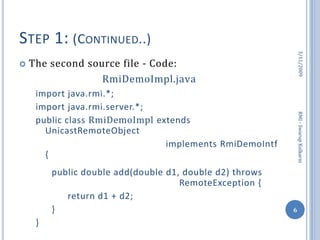
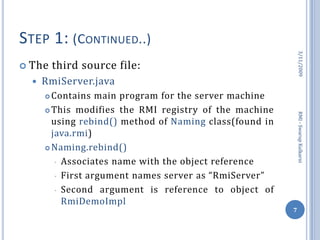
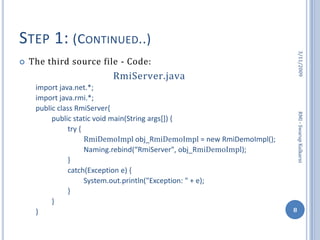

![Step 1: (Continued..)The third source file - Code:RmiServer.javaimport java.net.*;import java.rmi.*;public class RmiServer{public static void main(String args[]) {try {RmiDemoImpl obj_RmiDemoImpl = new RmiDemoImpl();Naming.rebind(“RmiServer", obj_RmiDemoImpl);}catch(Exception e) {System.out.println("Exception: " + e);}}}3/11/20098RMI - Swarup Kulkarni](https://image.slidesharecdn.com/introductiontormi-12563210495474-phpapp02/85/Introduction-To-Rmi-10-320.jpg)

![Step 1: (Continued..)The forth source file - Code:RmiClient.javaimport java.rmi.*;public class RmiClient {public static void main(String args[]) {try {double d1 = 24.73;double d2 = 11.12;String RmiDemoURL = "rmi://" + “127.0.0.1” + "/RmiServer";//127.0.0.1 is loopback address replace it with server IP/nameRmiDemoIntf obj = (RmiDemoIntf)Naming.lookup(RmiDemoURL);3/11/200910RMI - Swarup Kulkarni](https://image.slidesharecdn.com/introductiontormi-12563210495474-phpapp02/85/Introduction-To-Rmi-12-320.jpg)
